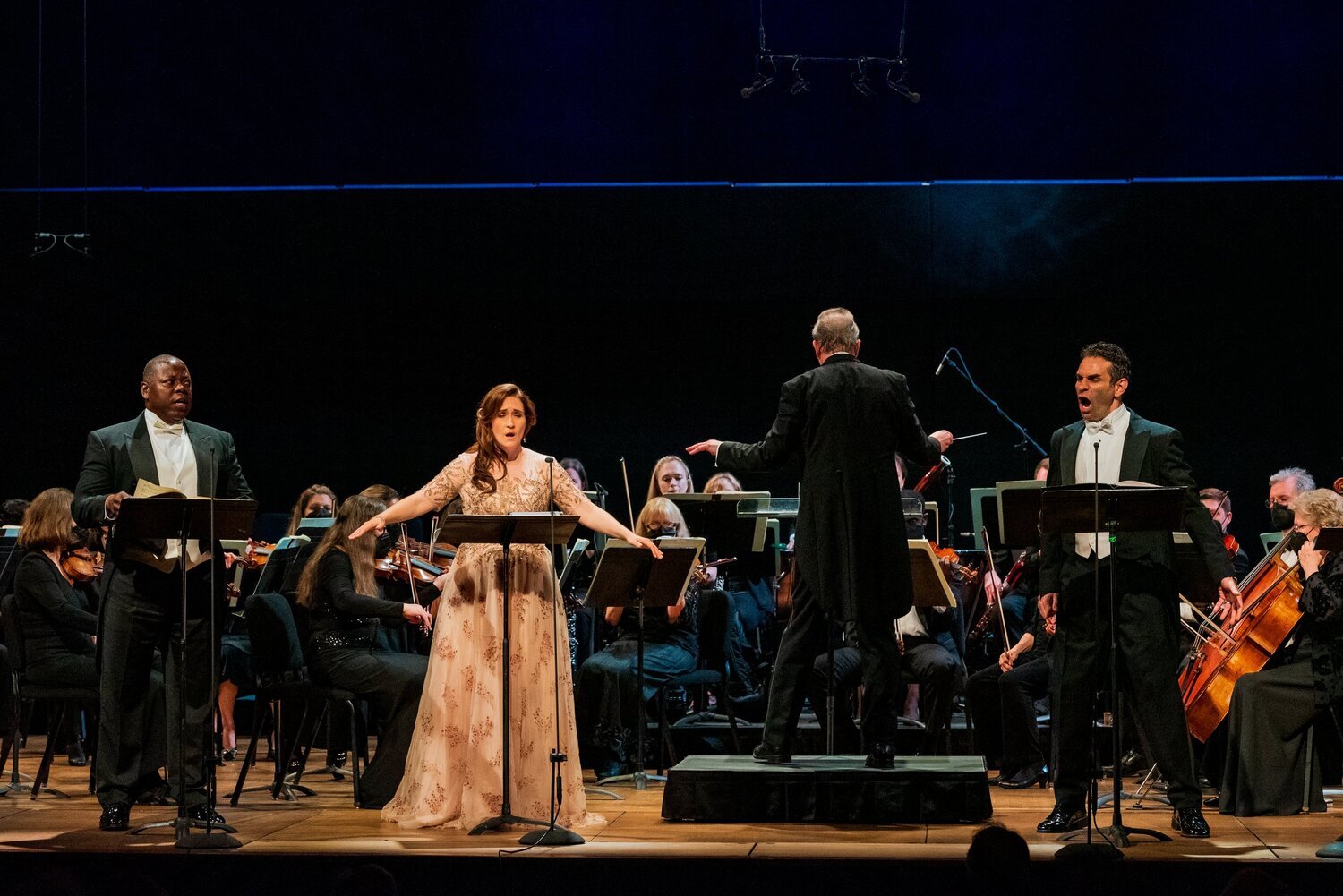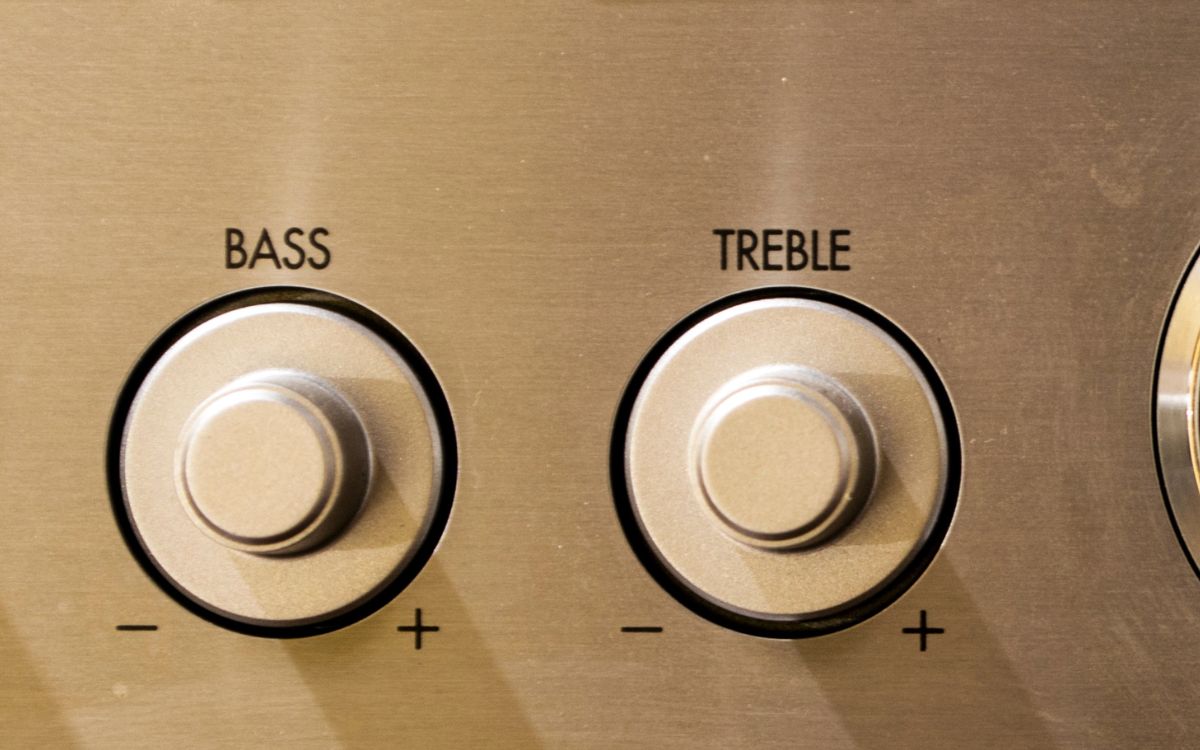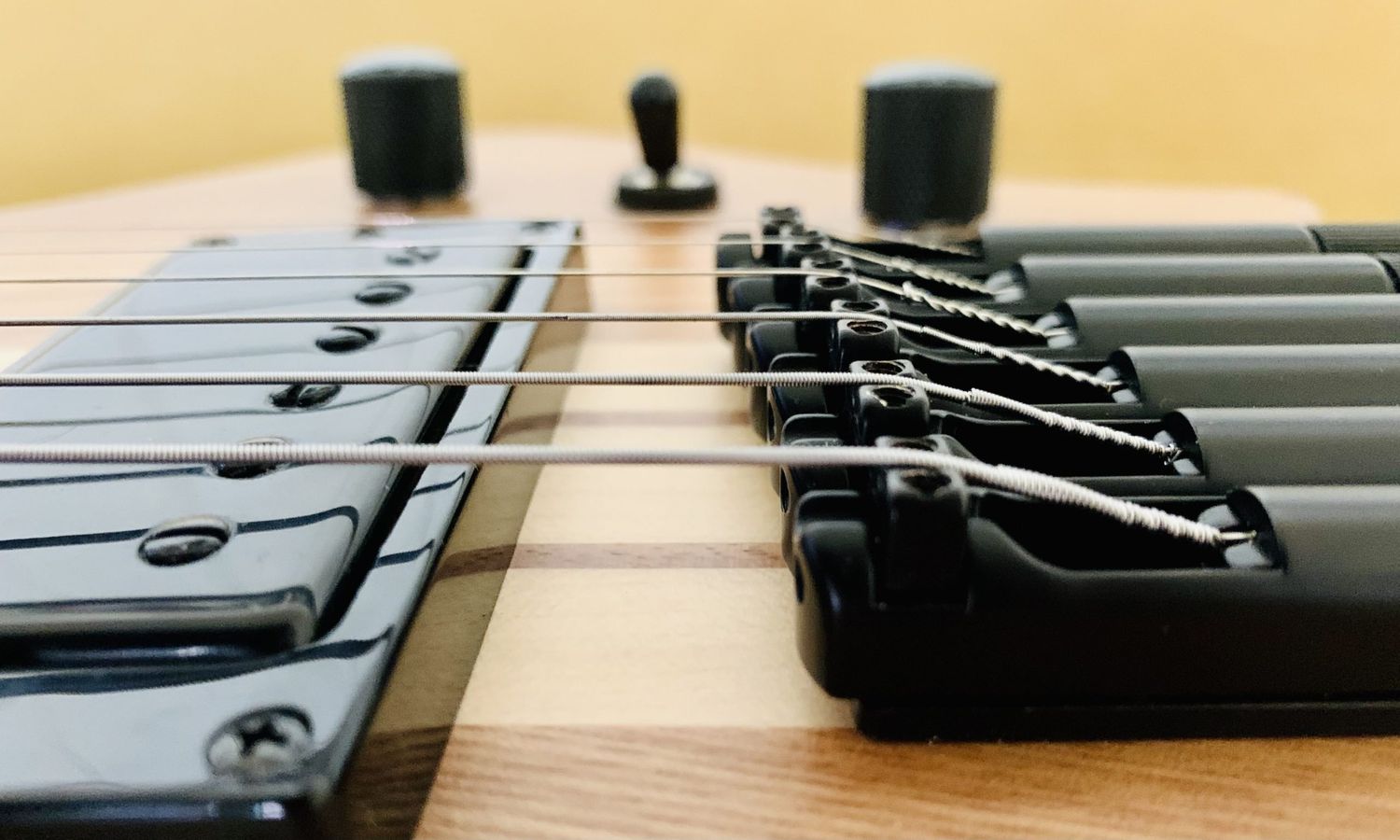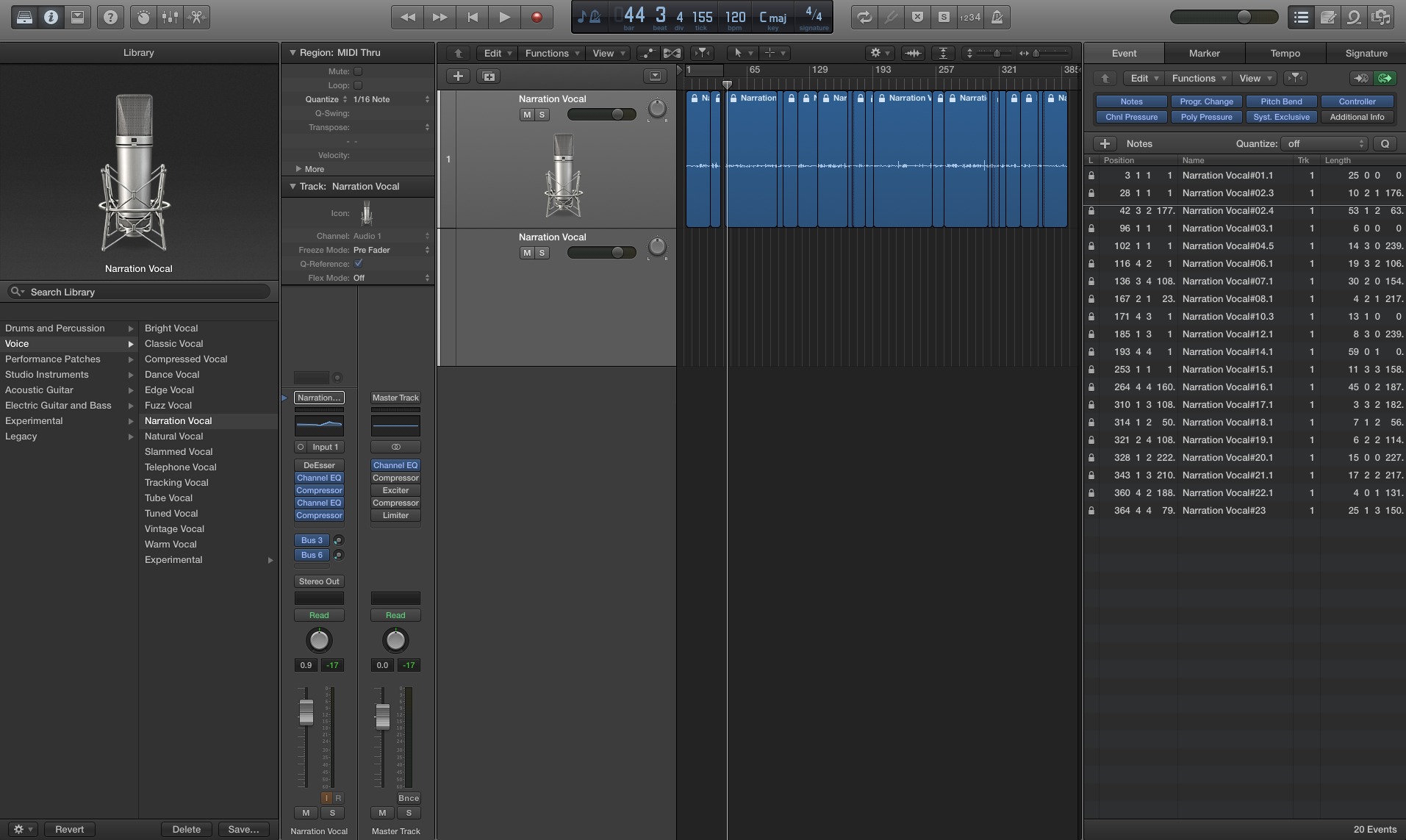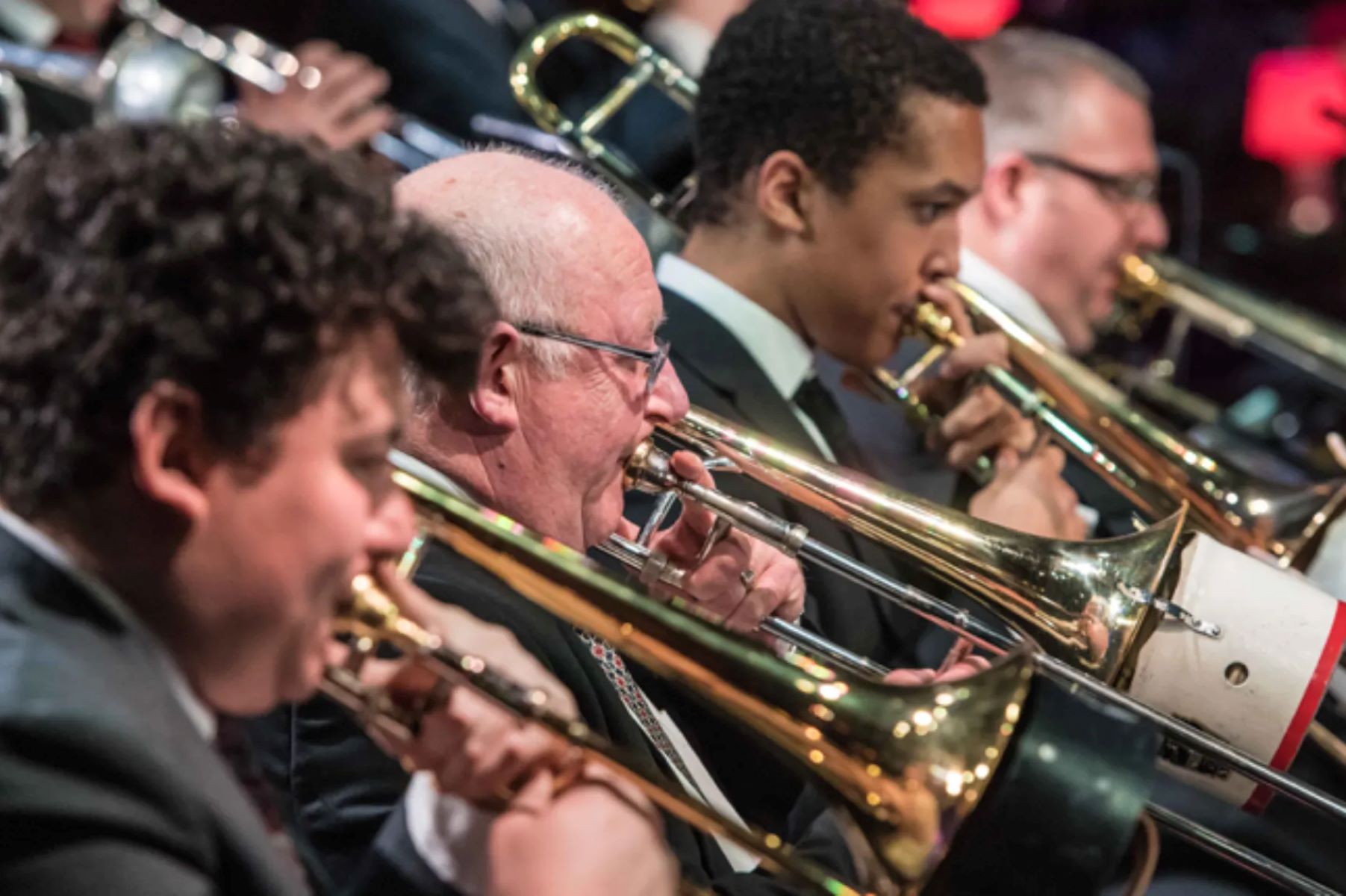

Jazz
How Has Jazz Changed Over Time
Modified: February 24, 2024
Discover the transformative evolution of Jazz over the years and explore how this iconic genre has shaped the music industry.
(Many of the links in this article redirect to a specific reviewed product. Your purchase of these products through affiliate links helps to generate commission for AudioLover.com, at no extra cost. Learn more)
Table of Contents
- Introduction
- Early Origins of Jazz
- The Birth of Jazz in New Orleans
- Jazz Spreads across America
- Jazz in the Roaring Twenties
- Swing Era and Big Bands
- Bebop and the Birth of Modern Jazz
- Jazz in the Civil Rights Era
- Fusion and the Incorporation of Different Genres
- Contemporary Jazz and the Influence of Technology
- Conclusion
Introduction
Jazz is a genre of music known for its rich history, innovative spirit, and improvisational nature. It originated in the late 19th century and has since evolved to become one of the most influential and enduring styles of music in the world.
With its roots deeply embedded in African American culture, jazz emerged as a form of artistic expression and a means of communication for marginalized communities. Over the years, it has expanded to incorporate various musical elements and styles, creating a diverse and ever-evolving genre.
In this article, we will delve into the fascinating journey of jazz, exploring its early origins, its growth and changes over time, and the impact it has had on music and society. From its birthplace in New Orleans to its global influence today, we will trace the evolution of jazz and examine the key milestones that have shaped its development.
Join us as we embark on a captivating musical journey through time, exploring the diverse genres, influential musicians, and significant cultural shifts that have defined the evolution of jazz. Whether you are a seasoned jazz enthusiast or a curious newcomer, this article will take you on a melodic adventure and provide insights into the ever-changing landscape of this extraordinary genre.
Early Origins of Jazz
The origins of jazz can be traced back to the late 19th century, a time when African slaves brought their rich musical traditions and rhythms to the United States. These slaves, with their diverse cultural backgrounds, played a pivotal role in shaping the foundation of jazz.
One of the key influences in the birth of jazz was the African polyrhythmic music, characterized by intricate rhythms and syncopation. This form of music, blended with the European musical traditions brought by colonizers, gave rise to a unique musical style that would later become known as jazz.
New Orleans, with its vibrant cultural mix and lively music scene, played a crucial role in the development of jazz. The city served as a melting pot of different musical styles, bringing together African rhythms, European instruments, and the influences of the Caribbean and Latin America.
Brass bands were common in New Orleans, and they played a significant role in the early development of jazz. These bands, often comprised of African American musicians, blended a variety of musical elements, including ragtime, blues, and spirituals, to create a distinct sound.
One of the earliest forms of jazz, known as “jass” or “jazz,” emerged at the turn of the 20th century. Musicians such as Buddy Bolden, a talented cornet player, and Jelly Roll Morton, a renowned pianist and composer, were instrumental in popularizing this new style of music.
The early jazz bands typically consisted of a frontline of brass instruments, including trumpets, trombones, and saxophones, accompanied by a rhythm section consisting of a piano, banjo, and drums. The improvisational nature of jazz allowed musicians to express themselves and interact with each other, creating a dynamic and spontaneous musical experience.
As jazz gained popularity, it started to spread beyond New Orleans and reached other parts of the United States. Musicians from New Orleans, such as Louis Armstrong and King Oliver, made significant contributions to the development of jazz and played pivotal roles in introducing the genre to a wider audience.
While the early origins of jazz can be traced back to New Orleans, its growth and evolution were driven by the contributions of musicians from various regions and cultural backgrounds. The diverse influences and amalgamation of musical styles would shape the future of jazz, propelling it into new and exciting directions.
The Birth of Jazz in New Orleans
New Orleans, the vibrant and culturally diverse city in Louisiana, holds a special place in the history of jazz. It was in this dynamic melting pot that jazz was born, drawing influences from African rhythms, European musical traditions, and the unique cultural mix of the city.
During the late 19th century, New Orleans was a bustling port city with a vibrant music scene. The streets were filled with the sounds of brass bands, musicians playing in dance halls and parks, and the lively energy of the city’s diverse neighborhoods.
One of the key characteristics that set New Orleans apart was its unique cultural blend. With a rich mix of African, French, Spanish, and Caribbean influences, the city provided fertile ground for musical innovation. African rhythms, brought over by enslaved Africans, intertwined with European musical traditions, creating a distinct musical tapestry that would become the foundation of jazz.
Due to New Orleans’ racially segregated society, African American musicians found opportunities to perform in places like Storyville, the city’s red-light district, where they were exposed to a wide range of musical styles, including blues and ragtime. It was in the “cribs” and brothels of Storyville that early jazz musicians honed their craft and experimented with new sounds.
The brass bands played a significant role in the development of jazz in New Orleans. These bands, consisting of trumpets, trombones, and saxophones, were a common feature in funerals, parades, and other festive occasions. They would march through the streets, playing lively and spirited music that captivated the crowds.
It was in this context that early jazz pioneers such as Buddy Bolden, known for his powerful cornet playing, and Jelly Roll Morton, a talented pianist and composer, emerged. Their innovative approach to music and their ability to blend various styles and influences helped shape the early sound of jazz.
Around the turn of the 20th century, the term “jass” or “jazz” began to be used to describe this new form of music. The exact origins of the term remain somewhat unclear, but it became synonymous with the lively and improvisational style that characterized early jazz.
As jazz continued to develop in New Orleans, it began to gain wider recognition and reach beyond the city’s borders. Musicians such as Louis Armstrong, King Oliver, and Sidney Bechet emerged as influential figures, taking the sound of New Orleans jazz to new heights.
The birth of jazz in New Orleans laid the foundation for the genre’s future growth and evolution. The city’s unique cultural mix, African roots, and vibrant music scene provided fertile ground for innovation and experimentation. Jazz would go on to become a cultural phenomenon, influencing music around the world and capturing the hearts of countless listeners.
Jazz Spreads across America
After its birth in New Orleans, jazz began to spread across America, captivating audiences in cities and towns across the country. The vibrant energy, innovative spirit, and infectious rhythms of jazz quickly caught on, and the genre started to evolve and take on new forms.
One of the key factors that contributed to the spread of jazz was the Great Migration. In the early 20th century, African Americans from the South migrated to Northern cities like Chicago, New York, and Detroit, bringing their cultural traditions, including jazz music, with them. As they settled in these urban centers, they formed communities and created new opportunities for jazz to flourish.
Chicago played a pivotal role in the dissemination of jazz in America. It became a hub for some of the most influential jazz musicians, including Louis Armstrong, Earl Hines, and King Oliver, who moved there from New Orleans. The vibrant nightlife and the thriving music scene in Chicago attracted both local and national attention, establishing the city as a major center for jazz.
In New York City, jazz found a new home in the bustling neighborhoods of Harlem and the vibrant nightlife of Greenwich Village. The Harlem Renaissance, a cultural and artistic movement during the 1920s, brought jazz into the mainstream and introduced it to a wider audience. Legendary jazz venues like the Cotton Club and the Savoy Ballroom became iconic spaces where jazz musicians showcased their talent, and swing music dominated the scene.
As jazz spread across America, it began to incorporate regional influences and merge with other musical genres. In Kansas City, a distinct form of jazz known as “Kansas City jazz” emerged, characterized by its swinging rhythm section and rich improvisation. The style was heavily influenced by the blues and had a lasting impact on the development of swing music.
In the 1930s and 1940s, the big band era took center stage. Bandleaders like Duke Ellington, Count Basie, and Benny Goodman led large jazz orchestras that showcased intricate arrangements and captivating solos. The big band sound dominated the airwaves and brought jazz into the mainstream, captivating audiences of all backgrounds.
During the 1950s and 1960s, jazz experienced a series of innovations and stylistic shifts. Musicians like Charlie Parker, Dizzy Gillespie, and Thelonious Monk paved the way for the birth of bebop, a complex and harmonically rich style of jazz that emphasized rapid tempos and virtuosic improvisation. Bebop marked a departure from the big band sound and pushed the boundaries of jazz.
Throughout the 20th century, jazz continued to evolve and adapt to the changing musical landscape. It incorporated elements of Latin music, funk, and rock, giving rise to genres like Latin jazz, jazz fusion, and jazz-rock fusion. These fusion styles expanded the horizons of jazz and appealed to a broader audience.
Jazz’s journey across America not only transformed the music scene but also had a profound social impact. It served as a vehicle for racial integration and the breaking down of social barriers. Through its innovative spirit and artistic expression, jazz became a symbol of cultural diversity and creativity, leaving an indelible mark on American music as a whole.
Jazz in the Roaring Twenties
The Roaring Twenties was a period of great change, cultural revolution, and artistic innovation. It was also a flourishing time for jazz, as the genre took center stage and became the defining soundtrack of the decade.
During this time, jazz reached new heights of popularity and captured the imagination of the American public. The lively and energetic rhythms of jazz perfectly matched the spirit of the Roaring Twenties—the era of flappers, speakeasies, and a newfound sense of liberation.
One of the key factors that contributed to the rise of jazz in the 1920s was the advent of the recording industry. Record labels such as Columbia, RCA Victor, and Okeh began to recognize the commercial potential of jazz and actively sought out talented musicians to record their music. This allowed jazz to reach a wider audience and solidify its presence in popular culture.
Notable jazz musicians of the era, including Louis Armstrong, Duke Ellington, and Bix Beiderbecke, became household names as their recordings traveled far and wide. Their innovative improvisations, distinctive playing styles, and charismatic stage presence captivated audiences across the country.
One of the iconic figures of the jazz age was Louis Armstrong. His virtuosic trumpet playing, unique vocal style, and engaging personality made him a beloved figure in the world of jazz. Armstrong’s recordings, such as “West End Blues” and “Potato Head Blues,” showcased his technical prowess and improvisational genius, cementing his status as one of the greatest jazz musicians of all time.
The advent of Prohibition in the United States further fueled the popularity of jazz. As the sale and consumption of alcoholic beverages were prohibited, hidden establishments known as speakeasies arose, serving as underground hotspots for jazz performances. These illicit venues became a breeding ground for creativity and improvisation, allowing musicians to experiment with new sounds and push the boundaries of the genre.
The 1920s also saw the rise of big band jazz, spearheaded by bandleaders such as Duke Ellington and Fletcher Henderson. These large ensembles, consisting of brass and woodwind sections, rhythm instruments, and vocalists, created a powerful and dynamic sound that became synonymous with the era. The arrangements and compositions of bandleaders like Ellington showcased sophisticated harmonies and intricate orchestrations, establishing the framework for future big band jazz.
Jazz in the Roaring Twenties represented a rebellious spirit and a break from traditional societal norms. It crossed racial and cultural boundaries, bringing people together through the universal language of music. The fusion of African rhythms, European harmonies, and American ingenuity produced a sound that resonated with a diverse and growing audience.
As the decade drew to a close, the stock market crash of 1929 and the subsequent Great Depression would bring about significant challenges for the jazz community. However, the legacy of jazz in the Roaring Twenties would endure, shaping the future of the genre and making an indelible mark on the cultural landscape of America.
Swing Era and Big Bands
The Swing Era, spanning from the late 1930s to the early 1940s, marked a golden age for jazz as big bands took the spotlight. This era brought a new level of sophistication, energy, and popularity to jazz, solidifying its status as a dominant genre in the music industry.
The emergence of big bands during the Swing Era revolutionized jazz performance. These large musical ensembles, consisting of brass, woodwind, and rhythm sections, showcased intricate arrangements, tight harmonies, and impressive solo performances. The powerful sound, infectious rhythm, and captivating danceability of big band jazz captivated audiences of all backgrounds.
Iconic bandleaders like Duke Ellington, Count Basie, Benny Goodman, and Glenn Miller led some of the most popular and influential big bands of the time. Each bandleader brought their unique style and musical vision to the forefront, contributing to the rich tapestry of swing music.
Duke Ellington, known for his distinctive compositions and innovative arrangements, led one of the most renowned big bands of the era. His orchestra showcased the talents of exceptional soloists and blended various musical elements, including blues, gospel, and classical influences, creating a sophisticated and dynamic sound.
The Count Basie Orchestra, on the other hand, focused on a more stripped-down, bluesy approach. Basie’s band emphasized swing rhythm, featuring sparse arrangements and leaving ample room for individual soloists to shine. The infectious groove and infectious nature of Basie’s music made it a favorite among dancers and listeners alike.
Benny Goodman, often referred to as the “King of Swing,” popularized the big band sound through his energetic and charismatic performances. His band, featuring talented soloists like Gene Krupa and Lionel Hampton, introduced audiences to new musical concepts and helped bridge the gap between jazz and popular music.
Glenn Miller and his orchestra achieved unprecedented commercial success, reaching audiences far beyond the typical jazz demographic. Miller’s smooth and melodic sound, known as “The Miller Sound,” combined elements of jazz and popular music, appealing to a wide range of listeners and solidifying his place as a mainstream icon.
The Swing Era also saw the rise of vocalists who fronted big bands, such as Ella Fitzgerald, Frank Sinatra, and Billie Holiday. These singers added a new dimension to the music, offering lyrical interpretations and heartfelt performances that captivated audiences.
The popularity of big bands during the Swing Era extended far beyond the dance halls and nightclubs. Jazz became a staple of radio broadcasts, and the music could be heard on jukeboxes, records, and film soundtracks. The energetic and uplifting spirit of swing music provided solace and escapism during the challenging times of the Great Depression and World War II.
However, the Swing Era began to decline as the war disrupted the music industry and shifting musical trends emerged. The rise of smaller ensembles and the advent of bebop signaled a new direction for jazz, as musicians sought to explore more complex harmonies and improvisational styles.
Despite its eventual decline, the Swing Era and its big bands left an indelible mark on the history of jazz. The legacy of swing music continues to be celebrated and serves as a testament to the enduring appeal of jazz as a vibrant and ever-evolving art form.
Bebop and the Birth of Modern Jazz
In the mid-1940s, jazz experienced a significant shift with the emergence of a new style known as bebop. Bebop, also referred to as “bop,” represented a departure from the larger ensembles and danceable rhythms of the Swing Era, leading to a more complex and virtuosic form of jazz.
Bebop was a reaction to the commercialization and simplification of swing music. Musicians sought to push the boundaries of jazz by focusing on intricate improvisations, advanced harmonies, and faster tempos. It was a music created by and for musicians, demanding technical mastery and an understanding of intricate musical concepts.
Legendary figures like Charlie Parker, Dizzy Gillespie, Thelonious Monk, and Bud Powell were at the forefront of the bebop movement. They challenged the existing conventions of jazz, embracing dissonance, complex chord progressions, and unconventional rhythms. Their music was marked by lightning-fast solos, harmonic complexity, and a relentless pursuit of musical innovation.
Charlie Parker, known as “Bird,” was one of the most influential figures in the development of bebop. His virtuosic saxophone playing and innovative melodic ideas revolutionized the jazz landscape. Parker’s compositions, such as “Confirmation” and “Ornithology,” showcased his technical brilliance and creative genius.
Trumpeter Dizzy Gillespie was another pivotal figure in the bebop movement. Known for his distinctive style and incredible range, Gillespie incorporated Latin rhythms and harmonies into his music, further expanding the boundaries of jazz. His compositions, like “A Night in Tunisia” and “Salt Peanuts,” became bebop classics.
Pianist Thelonious Monk, with his uniquely angular and idiosyncratic approach, introduced new harmonic structures and dissonant chords to the bebop vocabulary. His pieces, such as “Round Midnight” and “Straight, No Chaser,” challenged traditional chord progressions and became staples in the modern jazz repertoire.
Bud Powell, a virtuosic pianist, contributed to the bebop movement with his technical precision and creative improvisations. His groundbreaking recordings, like “Un Poco Loco” and “Tempus Fugue-It,” showcased his innovative use of harmony and rhythm.
Bebop represented a shift towards a more intellectual and challenging form of jazz. It demanded active listening and engagement from both musicians and audiences. The improvisations became more complex, the melodies more intricate, and the harmonies more sophisticated.
Despite initial resistance from some listeners and critics, bebop had a profound influence on the future of jazz. Its emphasis on individual expression and innovation paved the way for the development of modern jazz. Bebop musicians inspired subsequent generations of jazz musicians to push the boundaries of the genre further, leading to the exploration of avant-garde, free jazz, and other experimental styles.
The impact of bebop extended beyond music itself. It represented a new form of artistic expression and a rejection of the status quo. Bebop highlighted the importance of individuality, artistic integrity, and self-expression, setting the stage for the freedom and innovation that would define jazz in the decades to come.
Jazz in the Civil Rights Era
The Civil Rights Era, spanning from the 1950s to the 1960s, was a time of profound social change and activism in the United States. Jazz, with its rich history rooted in African American culture, became a powerful voice for the fight against racial inequality and the struggle for civil rights.
During this era, jazz musicians actively participated in the civil rights movement and used their music as a form of protest and expression. They found inspiration in the growing calls for equal rights and justice, and their music became a reflection of the times.
Artists like Max Roach, Abbey Lincoln, and Charles Mingus, among others, composed and performed music that addressed the racial tensions and injustices of the era. Their lyrics and compositions tackled themes of freedom, equality, and social consciousness.
One notable example is the album “We Insist! Freedom Now Suite” by Max Roach and Abbey Lincoln. Released in 1960, the album captured the spirit of the times and conveyed a message of black liberation. It incorporated spoken word, protest songs, and avant-garde jazz, highlighting the social unrest and demanding change.
The Civil Rights Era also saw the rise of legendary saxophonist John Coltrane, whose music became a symbol of spiritual and social awakening. Coltrane, through albums like “A Love Supreme” and “Alabama,” channeled his emotions and experiences into his music, addressing systemic racism and calling for unity and equality.
Jazz performances and concerts became platforms for activism and social change. Musicians often participated in benefit concerts and fundraisers to support civil rights organizations, using their music as a means to raise awareness and promote equality.
The integration of jazz ensembles and the collaboration between white and black musicians also played a significant role in breaking down racial barriers and challenging segregation norms. Artists like Dave Brubeck and Charles Mingus actively sought integration in their bands, demonstrating the power of collaboration and unity through music.
Iconic jazz vocalist Nina Simone used her powerful voice to advocate for civil rights, performing songs like “To Be Young, Gifted and Black” and “Mississippi Goddam,” which became anthems for the movement. Simone’s music empowered and inspired audiences, encouraging them to take a stand against injustices.
Jazz music of the Civil Rights Era not only provided a soundtrack to the movement but also served as a unifying force. It transcended racial and cultural boundaries, bringing people together under a common cause. The improvisational nature of jazz symbolized the resilience and adaptive nature of the African American community in the face of adversity.
The influence of jazz on the civil rights movement was reciprocal, as the movement also impacted the music itself. It pushed musicians to explore new boundaries, challenge conventions, and create music that reflected the realities of an unjust society.
Jazz in the Civil Rights Era serves as a testament to the enduring power of music as a catalyst for change. It is a reminder of the indomitable spirit and determination of artists who used their voices to speak out against injustice and fight for a more inclusive and equitable society.
Fusion and the Incorporation of Different Genres
In the late 1960s and 1970s, jazz underwent a significant transformation as musicians began to experiment with new sounds and incorporate elements from various musical genres. This period marked the rise of fusion, a genre that blended jazz with rock, funk, soul, and other influences, creating a dynamic and eclectic musical fusion.
Fusion emerged as a response to the changing musical landscape of the time and the desire to reach a broader audience. Musicians sought to bridge the gap between jazz and popular music, introducing elements of electric instruments, funk grooves, and amplified sound to their compositions.
One of the pioneers of jazz fusion was trumpeter Miles Davis. His landmark album “Bitches Brew” in 1970 exemplified this new direction, featuring a fusion of jazz improvisation, rock rhythms, and electronic instrumentation. Davis’s exploration of fusion and his collaborations with musicians like Herbie Hancock and Chick Corea pushed the boundaries of what jazz could be.
Another influential figure in the fusion movement was guitarist John McLaughlin, founder of the band Mahavishnu Orchestra. Their music blended elements of jazz, rock, Indian classical music, and progressive rock, showcasing a high-energy and virtuosic approach that captivated audiences.
Fusion also saw the emergence of jazz-funk, a subgenre that incorporated funk grooves and soulful melodies into jazz compositions. Artists like Herbie Hancock, Herbie Mann, and The Crusaders embraced this style, bringing a fresh and danceable sound to the fusion movement.
The incorporation of different genres in jazz fusion allowed for greater experimentation and a broader musical palette. Musicians drew inspiration from diverse sources such as world music, Latin rhythms, and psychedelic rock, creating a truly unique and innovative sound.
During this period, jazz fusion made its way into popular culture, reaching a wider audience through radio play and live performances. Its energetic and accessible nature made it appealing to a younger generation and helped to revive interest in jazz as a contemporary and relevant genre.
Fusion also paved the way for a renewed emphasis on individual improvisation. Musicians had the opportunity to explore new sonic landscapes, experiment with electronic effects, and showcase their technical prowess. This fusion of musical styles allowed for new artistic expressions and pushed the boundaries of traditional jazz conventions.
As fusion evolved, subgenres such as jazz-rock fusion and jazz-funk fusion emerged, each with its own distinct characteristics. Artists like Weather Report, Return to Forever, and The Brecker Brothers embraced these subgenres, further exploring the possibilities offered by the fusion movement.
The influence of fusion can still be felt in contemporary jazz and other genres today. Its impact can be heard in the work of artists like Robert Glasper, Snarky Puppy, and Kamasi Washington, who continue to blend jazz with various genres and redefine the boundaries of the genre.
Fusion and the incorporation of different genres in jazz marked a transitional period for the genre, expanding its reach and pushing its sonic boundaries. The fusion movement demonstrated the adaptability and evolutionary nature of jazz, ensuring its continued relevance and inspiring future generations of musicians and listeners alike.
Contemporary Jazz and the Influence of Technology
In the modern era, jazz continues to evolve and adapt to the ever-changing musical landscape. One significant factor driving this transformation is the influence of technology. The advancements in recording, production, and digital instruments have opened up new avenues for exploration, creativity, and collaboration within the realm of jazz.
Technology has revolutionized the recording process, allowing musicians to capture their performances with greater precision and clarity. Digital audio workstations (DAWs) and sophisticated recording equipment enable musicians to experiment with layering, editing, and manipulating sounds to create intricate and polished compositions. This level of control and precision has transformed the way jazz albums are produced and has expanded the possibilities for artistic expression.
Furthermore, the internet and streaming platforms have facilitated the distribution and accessibility of jazz music. Musicians can now share their music globally, reaching a wider audience without the barriers of geography and traditional record labels. This has allowed for greater exposure and collaboration among musicians from different cultural backgrounds, leading to the emergence of diverse and cross-cultural jazz music.
Additive manufacturing technology has also played a role in shaping contemporary jazz. 3D-printed instruments have become increasingly popular, offering musicians the opportunity to create custom-made instruments with unique shapes and tonal qualities. The ability to experiment with innovative designs and materials has pushed the boundaries of instrument construction and expanded the sonic possibilities in jazz music.
Electronic instruments and synthesizers have also made a profound impact on contemporary jazz. Musicians now incorporate electronic sounds, effects, and samples, blurring the lines between jazz, electronic music, and other genres. The fusion of acoustic and electronic elements has created a new sonic landscape, allowing for experimentation with textures, timbres, and rhythmic patterns.
Additionally, technology has transformed the way jazz music is composed, practiced, and taught. Digital music notation software and online education platforms provide musicians with tools to compose, arrange, and share their music more efficiently. Musicians can access online resources, tutorials, and virtual lessons, expanding their musical knowledge and skills.
The influence of technology has not only impacted the creative process but also the performance of jazz music. Live performances now incorporate visual elements, such as live projections and interactive lighting, creating immersive and multisensory experiences for the audience. Musicians can also explore real-time improvisation using live looping and digital effects, adding layers of complexity and spontaneity to their performances.
However, while technology has brought significant advancements, it is important to strike a balance and preserve the essence of human connection and interaction in jazz. The improvisational dialogue and energy exchanged between musicians and their audience remain at the core of jazz performance, even in an increasingly digital world.
Contemporary jazz continues to be shaped by the rapid advancements in technology. Whether through innovative recording techniques, digital instruments, or online platforms, technology offers new possibilities for artistic expression, collaboration, and exploration within the realm of jazz.
Conclusion
Throughout its rich history, jazz has evolved and transformed, reflecting the social, cultural, and technological changes of each era. From its early origins in New Orleans to the birth of modern jazz and the fusion movement, jazz has consistently pushed boundaries, defied conventions, and embraced innovation.
The early roots of jazz in African rhythms and European musical traditions laid the foundation for a genre that would capture the hearts and imaginations of people around the world. Jazz spread across America, bringing joy and unity to diverse audiences and serving as a powerful voice for social change during the Civil Rights Era.
The fusion movement of the late 20th century opened up new possibilities for jazz, incorporating elements of different genres and exploring the influence of technology. Jazz became more complex, diverse, and accessible, reflecting the ever-evolving musical landscape and the spirit of artistic experimentation.
Throughout its journey, jazz has inspired and influenced countless musicians and listeners, leaving an indelible impact on the world of music. It has transcended boundaries and served as a universal language, connecting people across cultures and generations.
As we look to the future, jazz continues to evolve. It incorporates new technologies, draws inspiration from a wide range of genres, and nurtures the creativity of musicians who carry the torch of innovation. Jazz embraces the past while embracing the possibilities of the future.
So, whether you find yourself captivated by the improvised solos of a bebop legend, grooving to the infectious rhythms of a big band, or exploring the fusion of jazz with various genres, jazz music offers a timeless experience that celebrates individual expression, cultural diversity, and the joy of musical exploration.
Let the melodies, harmonies, and improvisations of jazz transport you on a captivating journey, and may the spirit of jazz continue to inspire us all to embrace creativity, break barriers, and appreciate the beauty of this truly remarkable genre.




